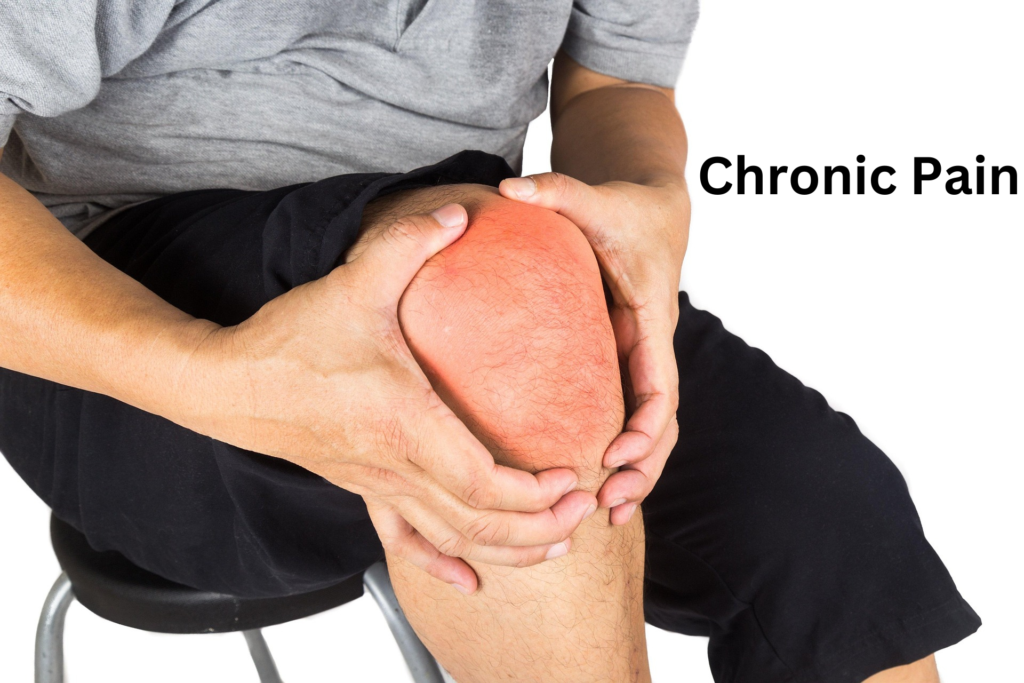Chronic pain is a debilitating condition that affects millions of people worldwide. Whether it’s arthritis, fibromyalgia, migraines, or back pain, living with chronic pain can significantly impact your quality of life. While medications and therapies are often the go-to solutions, managing chronic pain through diet is an increasingly popular and effective approach. In this blog post, we’ll explore how the foods you eat can influence pain levels, reduce inflammation, and promote overall well-being. With a focus on managing chronic pain through diet, we’ll provide actionable tips, scientific insights, and meal ideas to help you take control of your health.
Table of Contents
Understanding Chronic Pain and Inflammation
Chronic pain and inflammation are interconnected health issues that affect millions of people worldwide. Unlike acute pain, which is a short-term response to injury or illness, chronic pain persists for months or even years. Inflammation, often linked to chronic pain, is the body’s natural immune response to injury, infection, or harmful stimuli. However, when inflammation becomes prolonged, it can contribute to ongoing pain and a range of health complications.
In this post, we will explore the nature of chronic pain and inflammation, their causes, and the impact they have on overall health. Additionally, we’ll examine strategies for managing chronic pain and reducing inflammation to improve quality of life.
1. What is Chronic Pain?
Chronic pain is defined as pain that lasts for more than 12 weeks, even after the initial injury or illness that caused it has healed. It can vary in intensity, from mild to debilitating, and can affect different areas of the body, such as the back, joints, or muscles. Chronic pain is not just a physical condition but can also have psychological effects, contributing to issues like anxiety, depression, and fatigue.
Common Types of Chronic Pain:
- Neuropathic Pain: Caused by nerve damage, leading to sensations of burning, tingling, or shooting pain.
- Musculoskeletal Pain: Affects muscles, joints, and connective tissues, often resulting from conditions like arthritis or fibromyalgia.
- Headaches and Migraines: Recurring head pain that can be triggered by stress, hormonal changes, or environmental factors.
- Lower Back Pain: A common form of chronic pain, often associated with posture, injury, or degenerative conditions like herniated discs.
Chronic pain is complex and can result from a combination of physical, psychological, and environmental factors. In some cases, it may persist without an identifiable cause, making diagnosis and treatment challenging.
2. Understanding Inflammation
Inflammation is a natural process in which the body’s immune system responds to infection, injury, or harmful stimuli. When you experience an injury or infection, your immune system releases chemicals that trigger an inflammatory response to repair damaged tissues and fight off pathogens. In the short term, this response is essential for healing.
Types of Inflammation:
- Acute Inflammation: Short-term and usually resolves within a few days or weeks. It is characterized by redness, swelling, heat, and pain at the site of injury or infection.
- Chronic Inflammation: Long-term inflammation that can persist for months or years. It occurs when the immune response continues even when there is no longer a threat, leading to tissue damage and contributing to chronic pain.
While acute inflammation is beneficial for healing, chronic inflammation can be harmful. It has been linked to a wide range of health problems, including autoimmune diseases, cardiovascular disease, and chronic pain disorders.
3. Causes of Chronic Pain and Inflammation
Chronic pain and inflammation can be caused by a variety of factors, including injury, illness, lifestyle, and genetics. Understanding the underlying causes can help in developing effective treatment strategies.
Common Causes of Chronic Pain:
- Injury: Persistent pain can result from an injury that does not heal properly, such as a sprain, fracture, or surgery.
- Arthritis: Inflammatory conditions like rheumatoid arthritis or osteoarthritis can cause chronic pain in the joints.
- Fibromyalgia: A chronic condition characterized by widespread musculoskeletal pain, often accompanied by fatigue and mood issues.
- Nerve Damage: Injuries or diseases that affect the nerves, such as diabetes or shingles, can lead to neuropathic pain.
Causes of Chronic Inflammation:
Environmental Factors: Exposure to toxins, pollutants, and allergens can cause inflammation in the body.
Autoimmune Disorders: Conditions like lupus or multiple sclerosis cause the immune system to mistakenly attack healthy tissues, leading to chronic inflammation.
Infections: Some infections, such as hepatitis or Lyme disease, can trigger long-term inflammation if not treated properly.
Lifestyle Factors: Poor diet, lack of exercise, chronic stress, and smoking can contribute to inflammation over time.
Foods That Help in Managing Chronic Pain Through Diet
1. Fatty Fish
- Why It Helps: Fatty fish like salmon, mackerel, and sardines are rich in omega-3 fatty acids, which have potent anti-inflammatory properties.
- Scientific Evidence: Studies show that omega-3s can reduce joint pain and stiffness in conditions like rheumatoid arthritis.
- How to Include: Aim for 2-3 servings of fatty fish per week. If you’re vegetarian, consider flaxseeds, chia seeds, or algae-based supplements.
2. Leafy Greens
- Why It Helps: Leafy greens like spinach, kale, and Swiss chard are packed with antioxidants and magnesium, which help reduce inflammation and muscle tension.
- Scientific Evidence: Magnesium deficiency has been linked to increased pain sensitivity.
- How to Include: Add a handful of greens to smoothies, salads, or soups.
3. Berries
- Why It Helps: Berries like blueberries, strawberries, and raspberries are rich in anthocyanins, which have anti-inflammatory and antioxidant effects.
- Scientific Evidence: Anthocyanins can reduce oxidative stress and inflammation, which are linked to chronic pain.
- How to Include: Enjoy a bowl of mixed berries as a snack or add them to yogurt and oatmeal.
4. Nuts and Seeds
- Why It Helps: Nuts and seeds like almonds, walnuts, and sunflower seeds are high in healthy fats, fiber, and magnesium, all of which support pain management.
- Scientific Evidence: Regular consumption of nuts has been associated with reduced markers of inflammation.
- How to Include: Snack on a handful of nuts or sprinkle seeds on salads and oatmeal.
5. Turmeric
- Why It Helps: Turmeric contains curcumin, a compound with powerful anti-inflammatory and pain-relieving properties.
- Scientific Evidence: Curcumin has been shown to reduce pain in conditions like osteoarthritis and rheumatoid arthritis.
- How to Include: Add turmeric to curries, soups, or smoothies, or take it as a supplement.
6. Ginger
- Why It Helps: Ginger has natural anti-inflammatory and analgesic properties.
- Scientific Evidence: Ginger can reduce muscle pain and soreness, as well as joint pain in arthritis patients.
- How to Include: Use fresh ginger in teas, stir-fries, or smoothies.
7. Olive Oil
- Why It Helps: Extra virgin olive oil is rich in oleocanthal, a compound that mimics the effects of anti-inflammatory drugs.
- Scientific Evidence: Oleocanthal has been shown to reduce inflammation and pain in conditions like arthritis.
- How to Include: Use olive oil as a salad dressing or for light cooking.
8. Whole Grains
- Why It Helps: Whole grains like quinoa, brown rice, and oats are high in fiber and nutrients, which help reduce inflammation.
- Scientific Evidence: Diets high in refined grains can increase inflammation, while whole grains have the opposite effect.
- How to Include: Replace refined grains with whole grains in your meals.
9. Green Tea
- Why It Helps: Green tea contains epigallocatechin gallate (EGCG), a powerful antioxidant that reduces inflammation.
- Scientific Evidence: EGCG has been shown to alleviate pain in conditions like fibromyalgia.
- How to Include: Drink 2-3 cups of green tea daily.
10. Dark Chocolate
- Why It Helps: Dark chocolate (70% cocoa or higher) is rich in flavonoids, which have anti-inflammatory effects.
- Scientific Evidence: Flavonoids can reduce inflammation and improve blood flow, which may help alleviate pain.
- How to Include: Enjoy a small piece of dark chocolate as a treat.

Foods to Avoid When Managing Chronic Pain Through Diet
While some foods can help reduce pain, others can exacerbate inflammation and worsen symptoms. Here are the top foods to avoid:
1. Processed Foods
- Why Avoid: Processed foods are often high in trans fats, sugar, and additives, which can trigger inflammation.
- Examples: Chips, cookies, frozen meals, and sugary cereals.
2. Refined Sugars
- Why Avoid: Refined sugars can spike blood sugar levels and promote inflammation.
- Examples: Soda, candy, pastries, and sweetened beverages.
3. Red and Processed Meats
- Why Avoid: These meats are high in saturated fats and advanced glycation end products (AGEs), which can increase inflammation.
- Examples: Bacon, sausage, hot dogs, and deli meats.
4. Fried Foods
- Why Avoid: Fried foods are high in trans fats and oxidized oils, which promote inflammation.
- Examples: French fries, fried chicken, and doughnuts.
5. Alcohol
- Why Avoid: Excessive alcohol consumption can increase inflammation and worsen pain.
- Examples: Beer, wine, and spirits.
Meal Plan for Managing Chronic Pain Through Diet
Diet plays a significant role in managing chronic pain and inflammation. By incorporating anti-inflammatory foods and avoiding those that can exacerbate inflammation, individuals can improve their overall health and potentially reduce pain levels. This meal plan focuses on nutrient-rich, anti-inflammatory foods that support joint health, reduce inflammation, and provide sustained energy.
Key Principles of an Anti-Inflammatory Diet:
- Rich in Omega-3 Fatty Acids: Found in fatty fish, flaxseeds, and walnuts, omega-3s help reduce inflammation.
- Low in Processed Foods and Refined Sugars: These can trigger inflammation and worsen chronic pain.
- High in Fruits and Vegetables: These provide essential vitamins, minerals, and antioxidants that fight inflammation.
- Incorporates Whole Grains and Lean Proteins: These provide sustained energy and promote muscle health.
- Includes Anti-Inflammatory Spices: Such as turmeric, ginger, and garlic.
Day 1
Breakfast:
- Overnight Oats with Berries and Chia Seeds
- Rolled oats soaked overnight in almond milk, topped with fresh blueberries, raspberries, and chia seeds for omega-3s and antioxidants.
- Drizzle with honey and sprinkle a pinch of cinnamon.
Snack:
- Handful of Walnuts and a Green Apple
- Walnuts provide omega-3 fatty acids, and apples are rich in fiber and antioxidants.
Lunch:
- Quinoa Salad with Grilled Chicken, Kale, and Avocado
- Quinoa is a whole grain packed with protein. Combine with kale (a cruciferous vegetable), avocado (healthy fats), and grilled chicken breast for a protein-rich, anti-inflammatory meal.
- Dress with olive oil and lemon juice.
Snack:
- Carrot Sticks with Hummus
- Carrots are high in beta-carotene, and hummus made from chickpeas provides protein and fiber.
Dinner:
- Salmon with Steamed Broccoli and Sweet Potato
- Baked or grilled salmon provides omega-3 fatty acids, while broccoli is high in antioxidants. Sweet potatoes are rich in vitamins and have anti-inflammatory properties.
Day 2
Breakfast:
- Greek Yogurt with Flaxseeds and Strawberries
- Greek yogurt is rich in probiotics that support gut health, and flaxseeds are a great source of omega-3s. Top with fresh strawberries for an antioxidant boost.
Snack:
- Cucumber Slices with a Sprinkle of Sea Salt and Olive Oil
- Cucumbers are hydrating and anti-inflammatory, while olive oil adds healthy fats.
Lunch:
- Lentil Soup with Spinach and Turmeric
- Lentils are a great source of plant-based protein and fiber. Add turmeric for its potent anti-inflammatory effects, and spinach for an extra boost of vitamins.
Snack:
- Orange and a Handful of Almonds
- Oranges provide vitamin C, which supports the immune system and helps combat inflammation. Almonds offer healthy fats and protein.
Dinner:
- Grilled Turkey Burger with Mixed Greens and Avocado
- Lean turkey is an excellent source of protein, and avocado provides healthy fats. Serve with a side salad of mixed greens dressed with olive oil and balsamic vinegar.
Day 3
Breakfast:
- Smoothie with Spinach, Banana, Blueberries, and Flaxseed
- Blend spinach, banana, blueberries, almond milk, and flaxseed for a fiber-rich, anti-inflammatory smoothie packed with nutrients.
Snack:
- Sliced Pear and a Small Handful of Pecans
- Pears provide fiber and antioxidants, and pecans contain healthy fats.
Lunch:
- Grilled Mackerel with Brown Rice and Roasted Brussels Sprouts
- Mackerel is another fatty fish high in omega-3s. Serve with fiber-rich brown rice and Brussels sprouts, which are cruciferous and support reduced inflammation.
Snack:
- Bell Pepper Slices with Guacamole
- Bell peppers are rich in vitamin C and antioxidants, and guacamole made from avocado adds healthy fats.
Dinner:
- Stir-Fry with Tofu, Broccoli, and Ginger
- Tofu provides plant-based protein, broccoli is rich in antioxidants, and ginger has anti-inflammatory properties. Stir-fry in olive oil or sesame oil for added flavor.
Day 4
Breakfast:
- Buckwheat Pancakes with Almond Butter and Fresh Berries
- Buckwheat is a gluten-free whole grain that helps reduce inflammation. Top with almond butter for protein and healthy fats, and fresh berries for antioxidants.
Snack:
- Celery Sticks with Peanut Butter
- Celery is hydrating and contains anti-inflammatory compounds, and peanut butter provides healthy fats and protein.
Lunch:
- Baked Cod with Quinoa and Roasted Vegetables
- Cod is a lean fish rich in omega-3s. Serve with quinoa and a mix of roasted vegetables like zucchini, carrots, and bell peppers.
Snack:
- Trail Mix with Pumpkin Seeds, Dried Cranberries, and Dark Chocolate Chips
- Pumpkin seeds are rich in magnesium, which supports muscle health, while dark chocolate offers antioxidants.
Dinner:
- Turkey and Sweet Potato Stew
- Lean turkey simmered with sweet potatoes, carrots, onions, and turmeric for a hearty, anti-inflammatory meal.
Day 5
Breakfast:
- Chia Seed Pudding with Almond Milk and Mango
- Chia seeds provide omega-3s, and mango is rich in vitamins A and C. Prepare chia pudding by soaking chia seeds in almond milk overnight, and top with fresh mango slices.
Snack:
- Mixed Berries and Cottage Cheese
- Cottage cheese offers protein, while mixed berries provide antioxidants and fiber.
Lunch:
- Grilled Shrimp Salad with Spinach, Tomatoes, and Avocado
- Shrimp is a good source of lean protein, while spinach, tomatoes, and avocado add a range of anti-inflammatory nutrients. Dress with olive oil and lemon juice.
Snack:
- Sliced Kiwi and a Handful of Sunflower Seeds
- Kiwi is high in vitamin C, and sunflower seeds provide magnesium and healthy fats.
Dinner:
A combination of anti-inflammatory veggies like bell peppers, mushrooms, and spinach stir-fried with tofu, ginger, and garlic.
Vegetable Stir-Fry with Tofu, Ginger, and Garlic
Lifestyle Tips for Managing Chronic Pain Through Diet
- Stay Hydrated: Dehydration can worsen pain and inflammation. Aim for 8-10 glasses of water daily.
- Practice Portion Control: Overeating can lead to weight gain, which puts additional stress on joints and muscles.
- Combine Diet with Exercise: Regular physical activity can enhance the pain-relieving effects of a healthy diet.
- Track Your Progress: Keep a food diary to identify which foods help or worsen your pain.
Conclusion
Managing chronic pain through diet is a natural and effective way to reduce inflammation, alleviate pain, and improve your overall quality of life. By incorporating anti-inflammatory foods like fatty fish, leafy greens, berries, and turmeric into your meals, and avoiding pro-inflammatory foods like processed snacks and sugary drinks, you can take control of your health and well-being. Remember, consistency is key—small, sustainable changes to your diet can lead to significant improvements over time.
If you’re struggling with chronic pain, consider consulting a healthcare professional or nutritionist to create a personalized plan tailored to your needs. With the right approach, you can transform your diet into a powerful tool for pain relief and long-term wellness.
References: Harvard Health, Arthritis Foundation, Medical News Today, Healthline, and peer-reviewed studies on diet and chronic pain.

